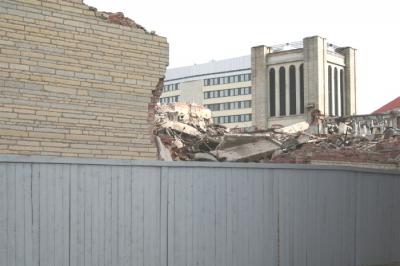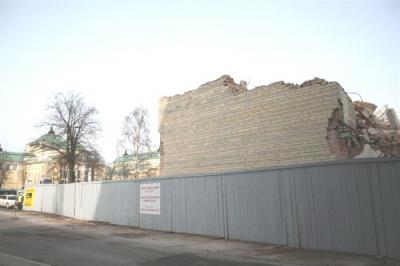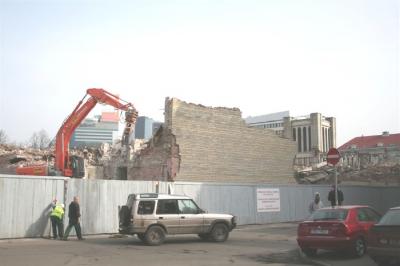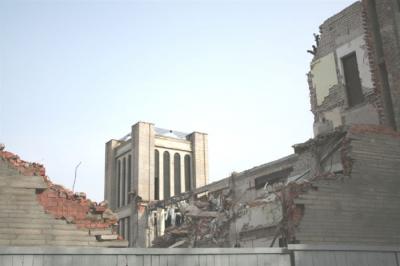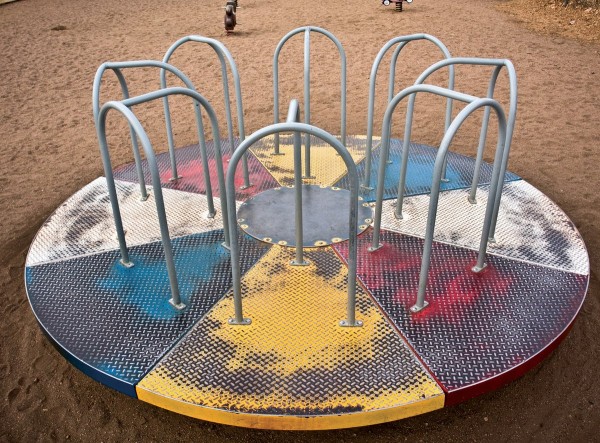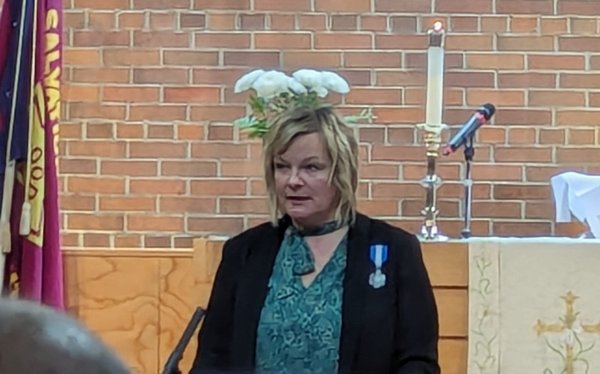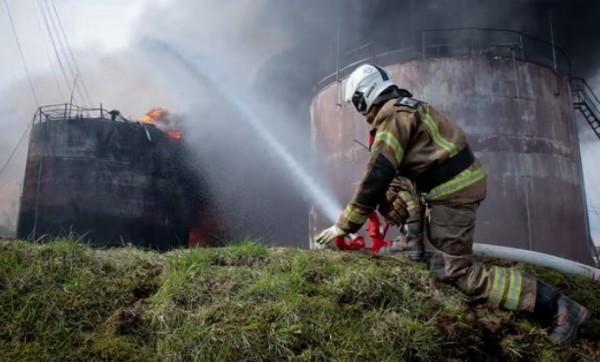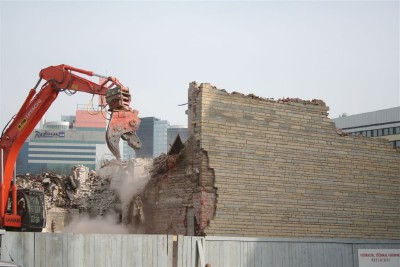
Sakala keskuse’s last standing wall. The tower and Rävala puiestee facade of the 1980s-built limestone giant were to be incorporated into the modern glass complex set to replace it, but were partially destroyed (oops!?)
The library on Tõnismägi, next to the infamous pronkssõdur, bronze (unknown Russian) soldier, is unequivocally the capital’s “Fort Book” and performances and concerts are still held at the (albeit unrenovated) Linnahall. Sakala keskus, built for political meetings and later serving as a concert and conference venue, was the least used as of late, yet in the sweetest location: midtown, right across from the Estonia Theatre. Its nickname used to be Karla katedraal (Karl’s cathedral) after Karl Vaino, first secretary of Estonia’s communist party at the time. Across the street from Sakala keskus’s main doors stood Lenin and behind him, Estonian communist party headquarters. But just as the latter is now the Ministry of Foreign Affairs and the statue of Lenin is a distant memory, Sakala keskus too, was worth re-inventing, insisted those who began to call for it to be spared the wreaking ball.
“Tervet asja ei lõhuta”– If it’s not broken, don’t break it! said renown host of the radio program Keelekõrv (An Ear for Language) Mari Tarand, wife of politician and member of the European Parliament, Andres Tarand. Those siding with the recycle, re-use mentality were naturally concerned about what was to replace it – Uus (new) Sakala was to be a shiny glass colossus, a cineplex-type mini movie theatre mecca, shopping haven and then some. Protests were held to save the unique example of limestone (Estonia’s national stone) architecture; promises and deals were made and subsequently broken. What ensued can only be described as a parody of democracy of grand proportions. And the final result – Sakala keskus began to fall in the early morning hours following parliamentary elections in March.
The Sakala saga was not about saving a Soviet landmark. In fact it had no obvious markings as such, except perhaps for its massive, unfriendly and largely windowless facades. But windows can be created, old buildings incorporated into new ones and compromises reached. Yet political bedfellows and money won out.
But what good came of the Sakala keskuse uproar? The uproar itself, which was given plenty of media coverage, as well as the ensuing message that not only money talks, but history, values and fossil-laden limestone definitely talks – via the people, thousands of them spoke up this time in defence of the principle of preservation. In fact the old Sakala managed to hold out a lot longer than many quaint, historic buildings in Tallinn, where wooden houses tend to mysteriously “catch fire”, making way for more profitable square-metre’age, so to speak.
Two words were like a breath of fresh air during these trying times, they are part of the name of the non-profit organisation Hooliv Jätkusuutlik Tallinn, “Caring, Sustainable Tallinn”. Let’s hope the concept will ring true soon.






